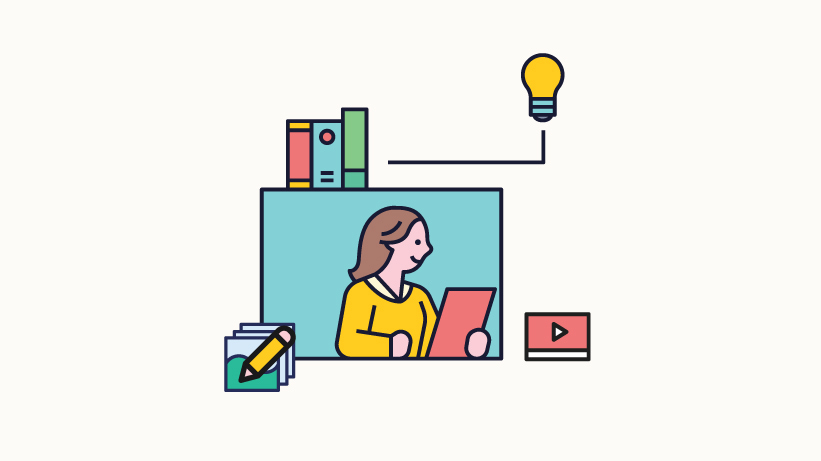Empowering Learning Through Inclusive Design
Diversity in learning is more than a mere buzzword; it stands as a critical necessity within the ever-evolving landscape of learning experience design. Drawing from my role as a Senior Learning Experience Designer, I have put together a checklist to ensure the learning experience you design is inclusive and diverse in an online setting. This checklist serves as a framework to ensure that the learning experiences are designed to be not only inclusive but also able to convey the rich diversity of society and humanity, particularly when intended for an online context.
Often when aiming to design inclusively, learning experiences are designed to be accessible, but we are not just talking about accessibility. To create a truly inclusive learning experience, the outcome is not only accessible but also embracing of the diversity of your learners. This is not just a checklist; it's the secret sauce for every Learning Experience Designer (LXD) with aspirations to create more inclusive learning experiences that break barriers. This holistic approach aims to acknowledge the value of inclusivity and to leverage it as a driving force for transformative and empowering learning.
The checklist aligns with the three dimensions of inclusive design as outlined by the Inclusive Design Research Centre and the Inclusive Design Institute. These dimensions serve as a comprehensive framework for creating an inclusive and diverse online learning experience. By adhering to these dimensions, the checklist aims not only to break barriers but also to open doors to a more inclusive and empowering learning journey for all participants, creating a transformative and sustainable learning experience.
Recognize Diversity
Firstly, the "Recognize Diversity" dimension underscores the significance of acknowledging the uniqueness of each individual. This involves embracing a visual design that mirrors a diverse demographic, incorporating inclusive content, avoiding biases and stereotypes, and ensuring a user-friendly and accessible interface.
To create an inclusive learning experience, it is absolutely crucial to not only acknowledge but also take into account the inherent uniqueness of each and every individual involved. This recognition serves as the foundation upon which an inclusive learning environment can be constructed, one that values and respects the diverse identities, abilities, experiences, and perspectives of learners. Here are some key points to consider:
- Embrace visual design that reflects a diverse demographic, including age, gender, ability, and cultural background.
- Ensure content is inclusive by incorporating examples and scenarios that resonate with a diverse demographic.
- Implement language and examples that avoid biases and stereotypes related to gender, age, ethnicity, or other demographic factors.
- Verify that the User Interface (UI) is user-friendly, intuitive, and accessible.
- Confirm that the delivery channel aligns with the diverse needs of the audience.
- Implement accessibility guidelines as a standard to ensure all aspects are accessible, covering considerations such as color contrast, navigation, content alternatives, etc.
Inclusive Process And Tools
Secondly, the "Inclusive Process and Tools" dimension emphasizes involving individuals with diverse perspectives in the design process. This extends to encouraging learners to share experiences, ensuring diverse representation in course materials, fostering a respectful learning environment, actively engaging stakeholders from varied backgrounds, and promoting cross-functional collaboration.
By integrating a multitude of viewpoints, the goal is to guarantee that the final product is not only reflective of this diversity but is inherently inclusive. It emphasizes fostering an environment where a variety of voices, experiences, and insights contribute to shaping the educational experience. This inclusive approach ensures that the end result resonates with a broad audience, acknowledging and valuing the richness that diverse perspectives bring to the learning environment.
- Encourage learners to share their unique experiences and insights through discussions and collaborative activities.
- Ensure representation in course materials is diverse and culturally sensitive.
- Offer alternative learning pathways to accommodate different learning preferences and abilities.
- Provide resources in multiple formats to accommodate various needs.
- Facilitate a learning environment that respects and values the contributions of individuals from different backgrounds.
- Actively involve stakeholders from diverse backgrounds in the design process.
- Establish partnerships with accessibility experts to enhance the overall inclusivity of learning materials.
- Encourage cross-functional collaboration to incorporate different expertise.
Broader Beneficial Impact
Finally, the "Broader Beneficial Impact" dimension underscores the intricate, non-linear nature of the design process and the imperative of ensuring long-term sustainability. This dimension advocates for a holistic approach by encouraging considerations of the broader impact beyond immediate implementation. It emphasizes the establishment of effective feedback channels, allowing users to share their experiences and insights continually. The broader beneficial impact does not have to be limited to the learning experience in question; it can also be for future learning experiences that may be designed by someone else.
Additionally, it promotes the implementation of changes based on ongoing user feedback, fostering a dynamic and adaptive learning environment. To enhance accessibility and inclusivity, thorough testing is recommended across various devices and assistive technologies, ensuring compatibility and usability for a diverse user base. This comprehensive approach not only addresses immediate needs but also contributes to the continuous improvement and evolution of the learning experience, aligning with the ever-changing educational landscape.
- Consider the long-term sustainability of the design beyond immediate implementation.
- Establish feedback channels for users to share their experiences.
- Regularly solicit input from underrepresented user groups.
- Conduct usability testing with diverse user groups at multiple stages of development.
- Continuously update and improve the learning experience based on evolving user needs and feedback.
- Test across different devices and assistive technologies to ensure compatibility.
- Share best practices and lessons learned from designing inclusive learning experiences to inspire others in the field.
- Advocate for inclusivity in education through participation in relevant conferences and forums.
Conclusion
In conclusion, as a Learning Experience Designer, it's crucial to acknowledge that embracing inclusivity goes beyond a mere responsibility; it presents an extraordinary opportunity to enhance the impact of learning initiatives. At first glance, it may appear time-consuming and challenging to implement. However, when inclusive design is integrated as an intrinsic part of every step in the process, its application becomes increasingly seamless and less deliberate. This adds value for money in the short and long term and enhances the effectiveness of all learning solutions.
The incorporation of the diversity checklist into your design process signifies more than just breaking barriers; it symbolizes opening doors to a significantly more inclusive and empowering learning journey that extends its benefits to all participants. This holistic approach not only transforms the learning experience but also establishes the groundwork for a more equitable and enriched learning environment. It ensures that the advantages of diversity are intricately woven into the fabric of every learning journey, fostering a space where varied perspectives thrive and contribute to a more profound learning experience.










